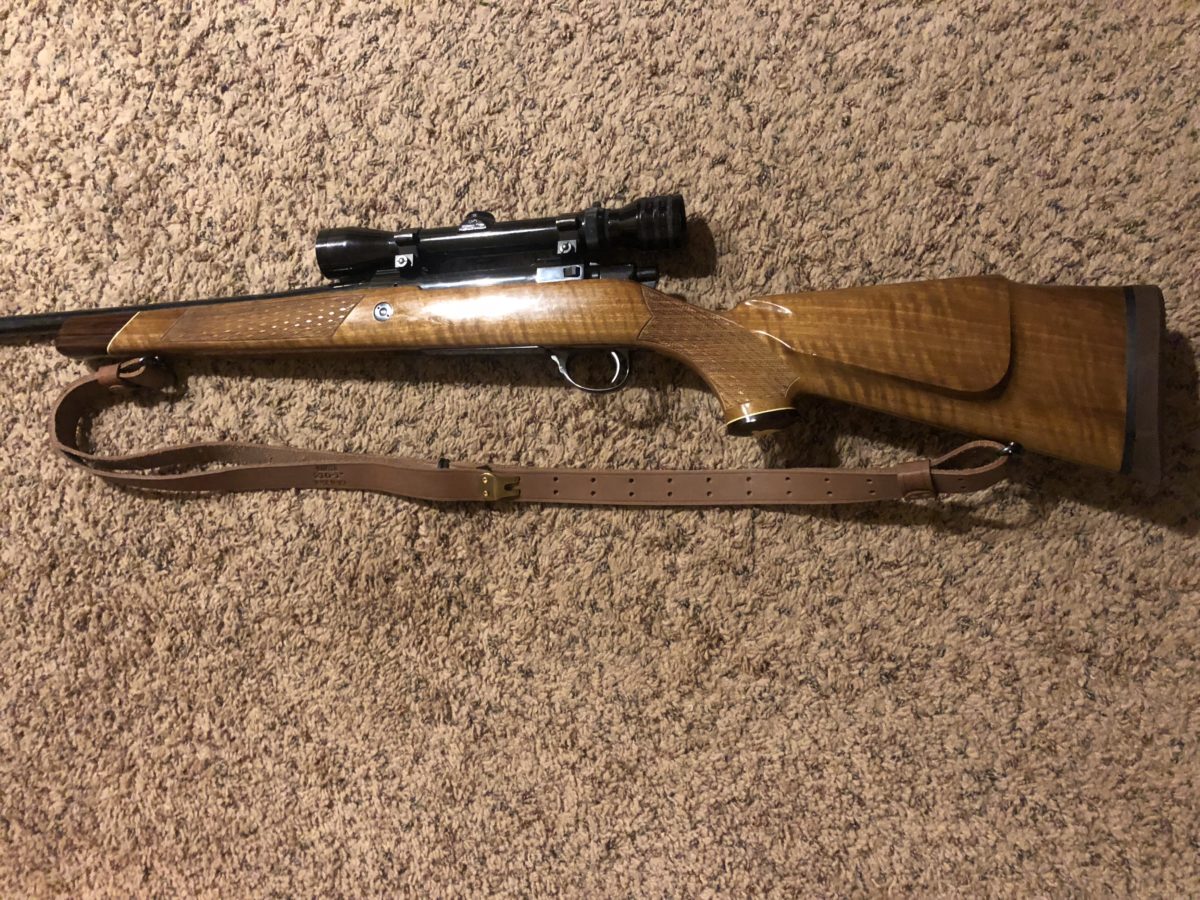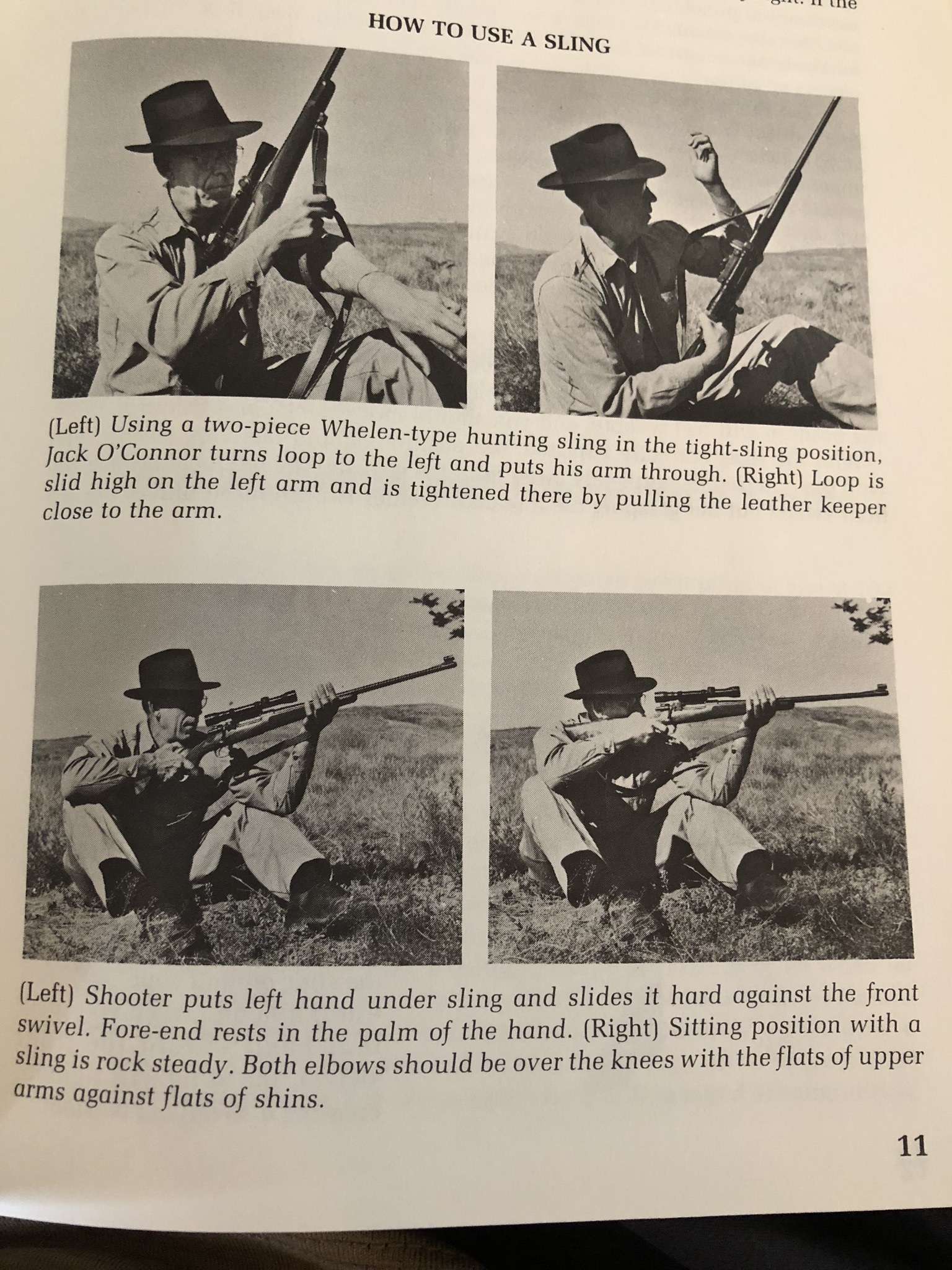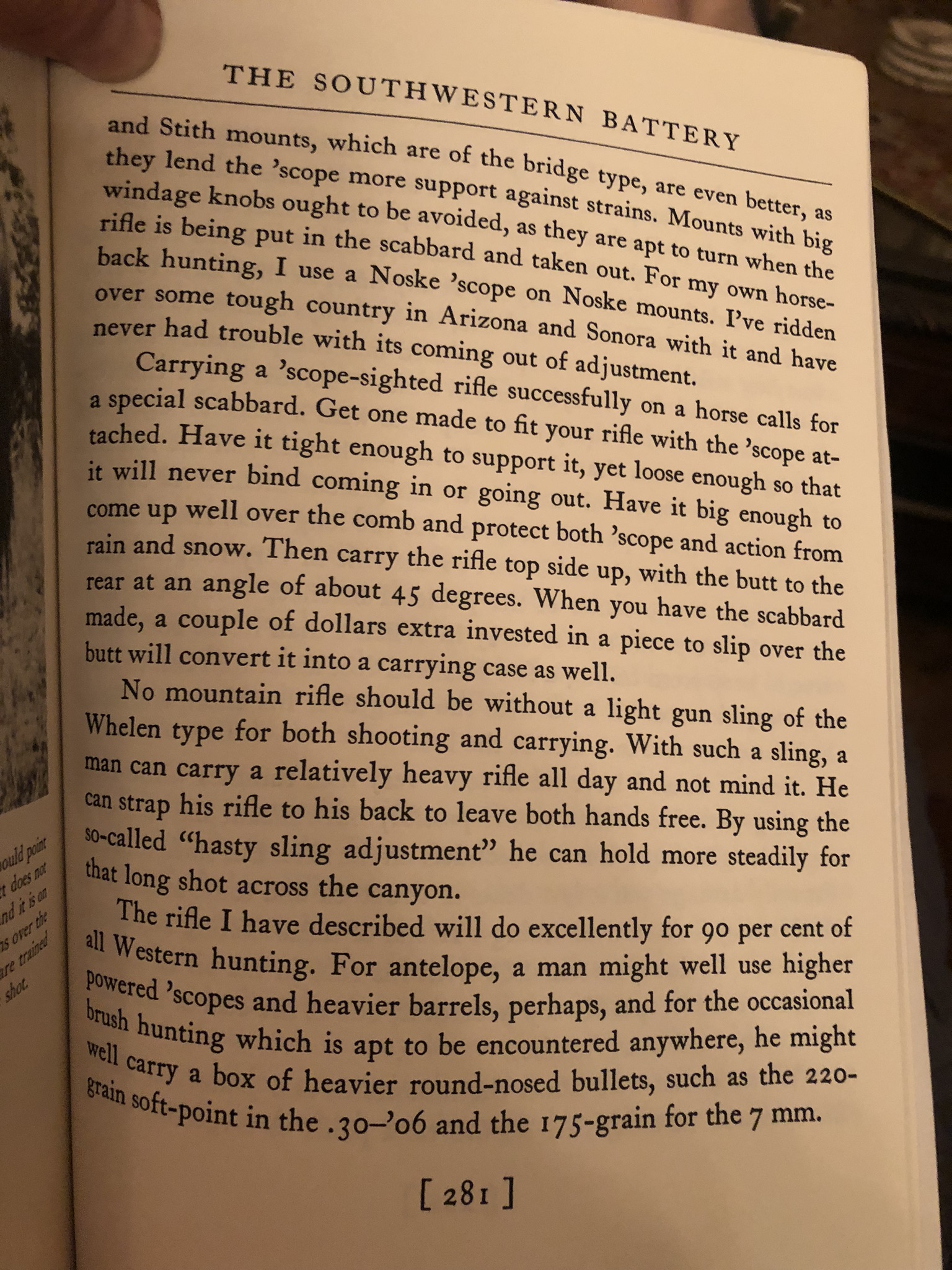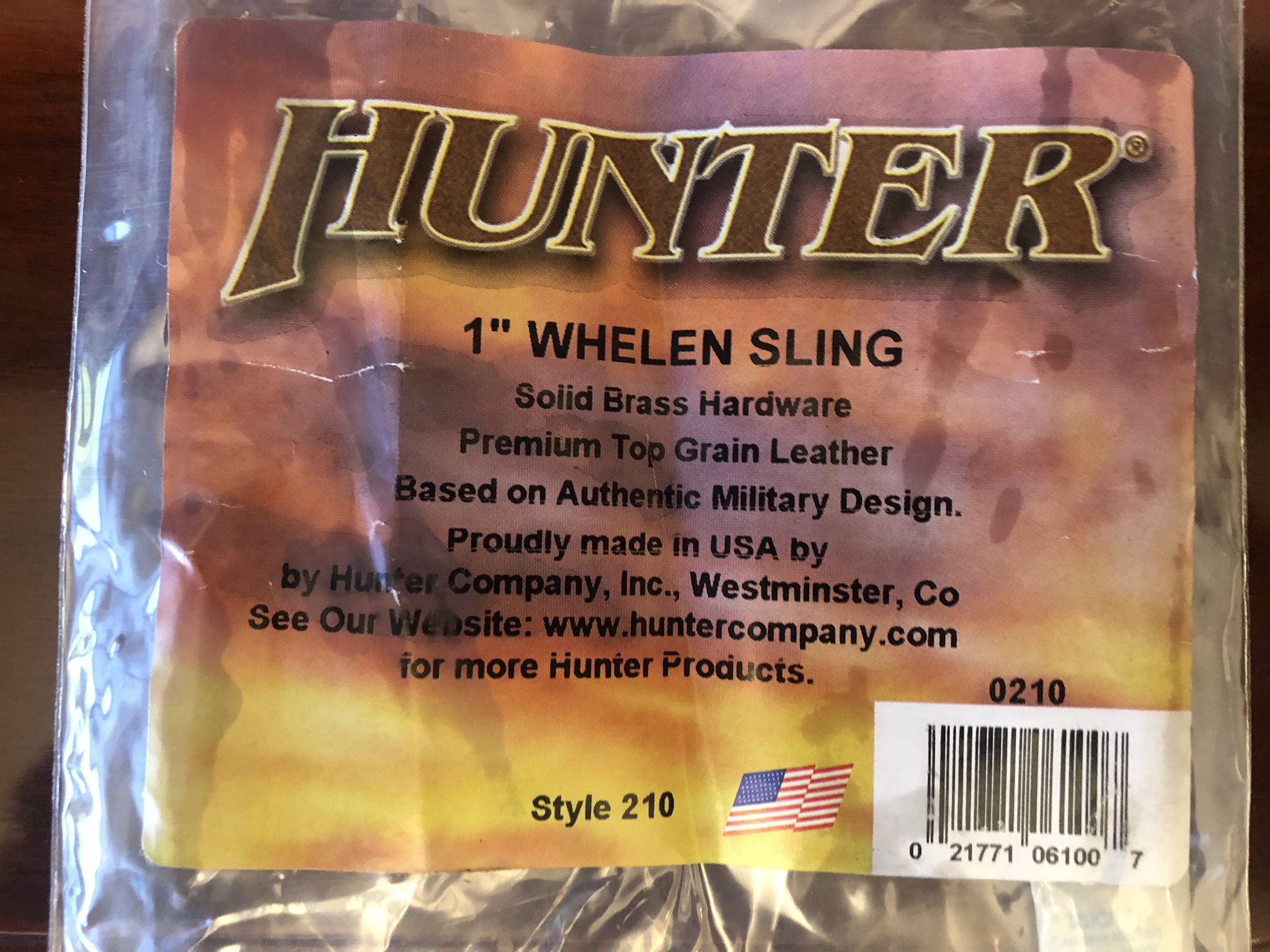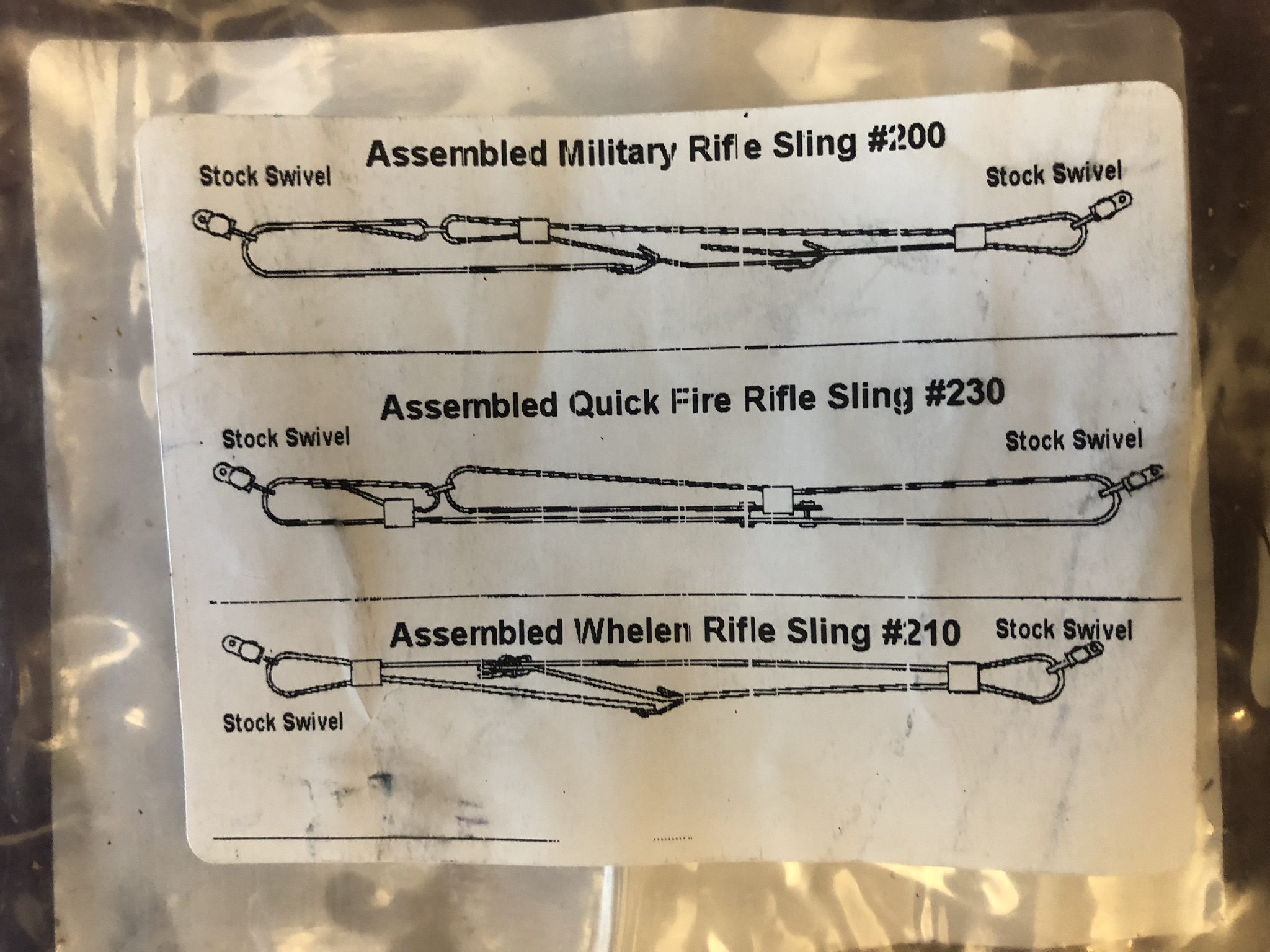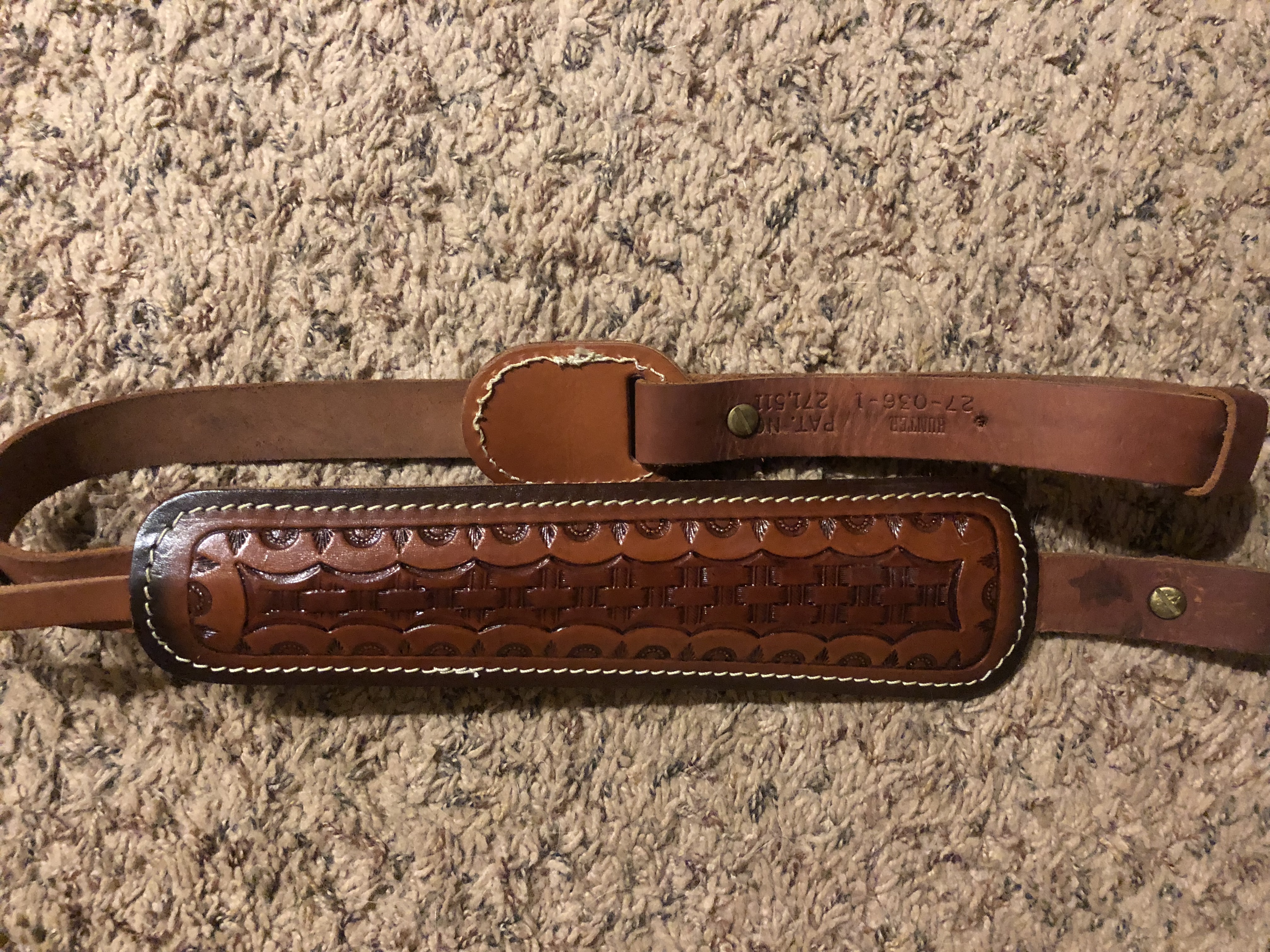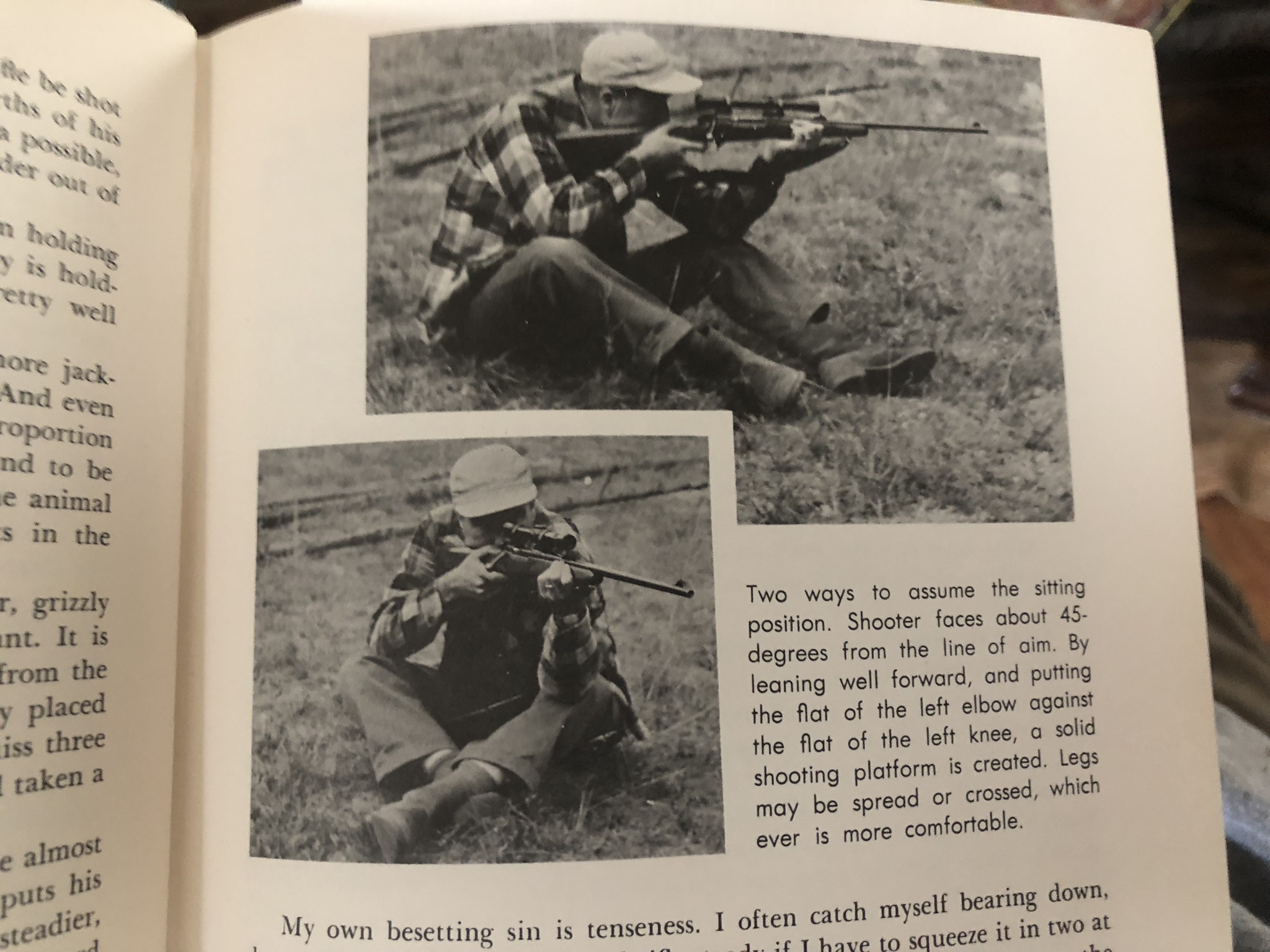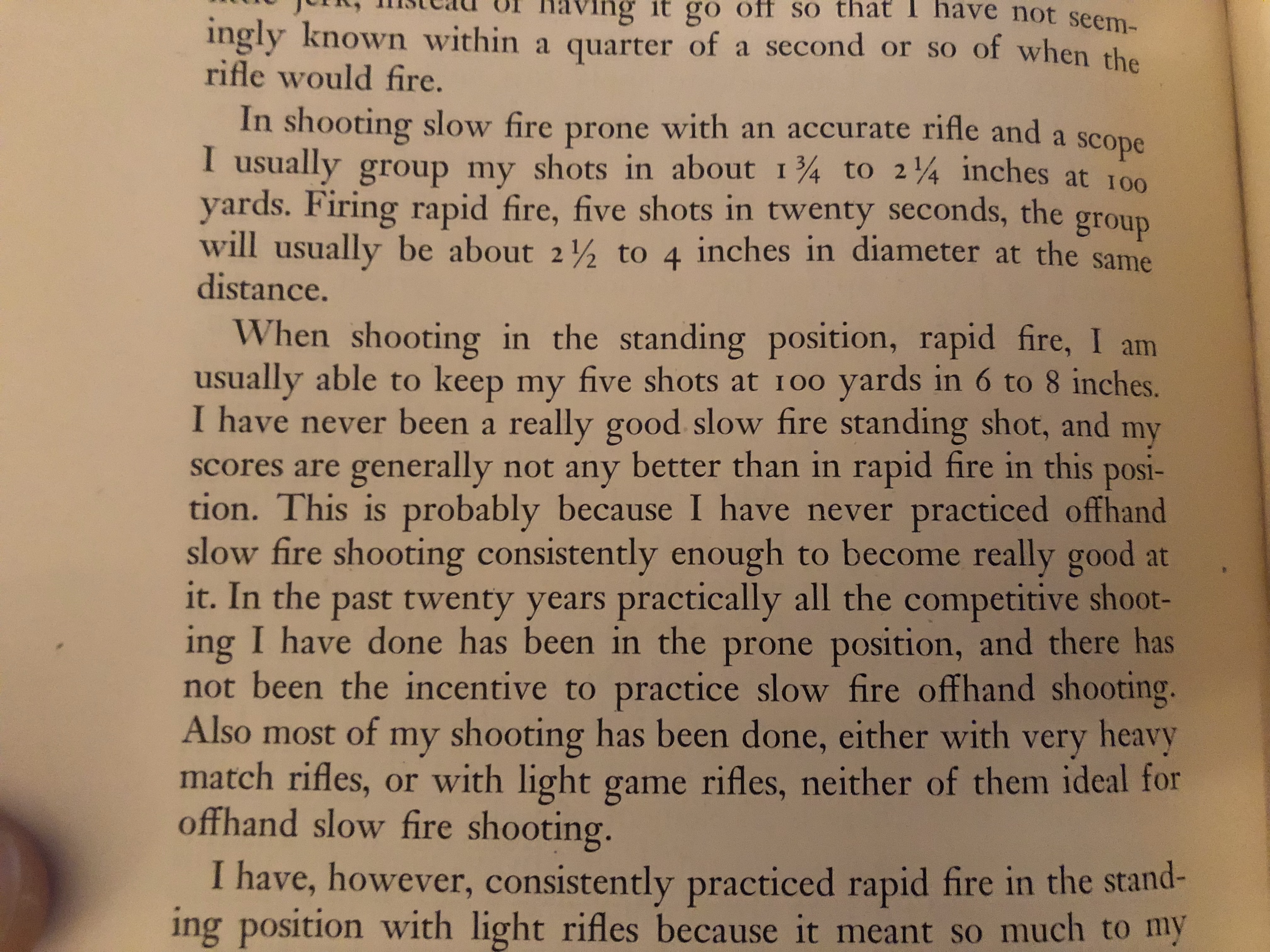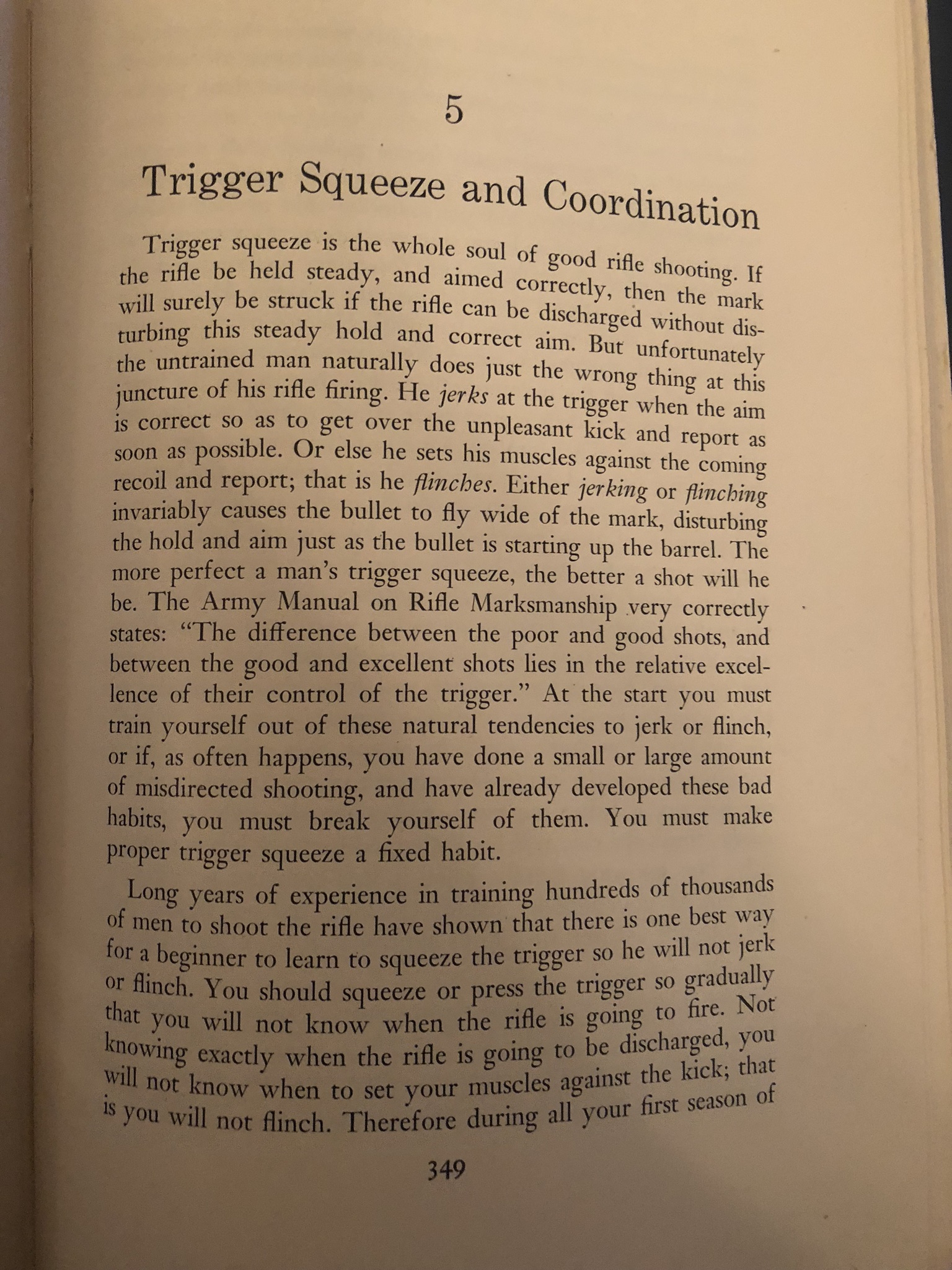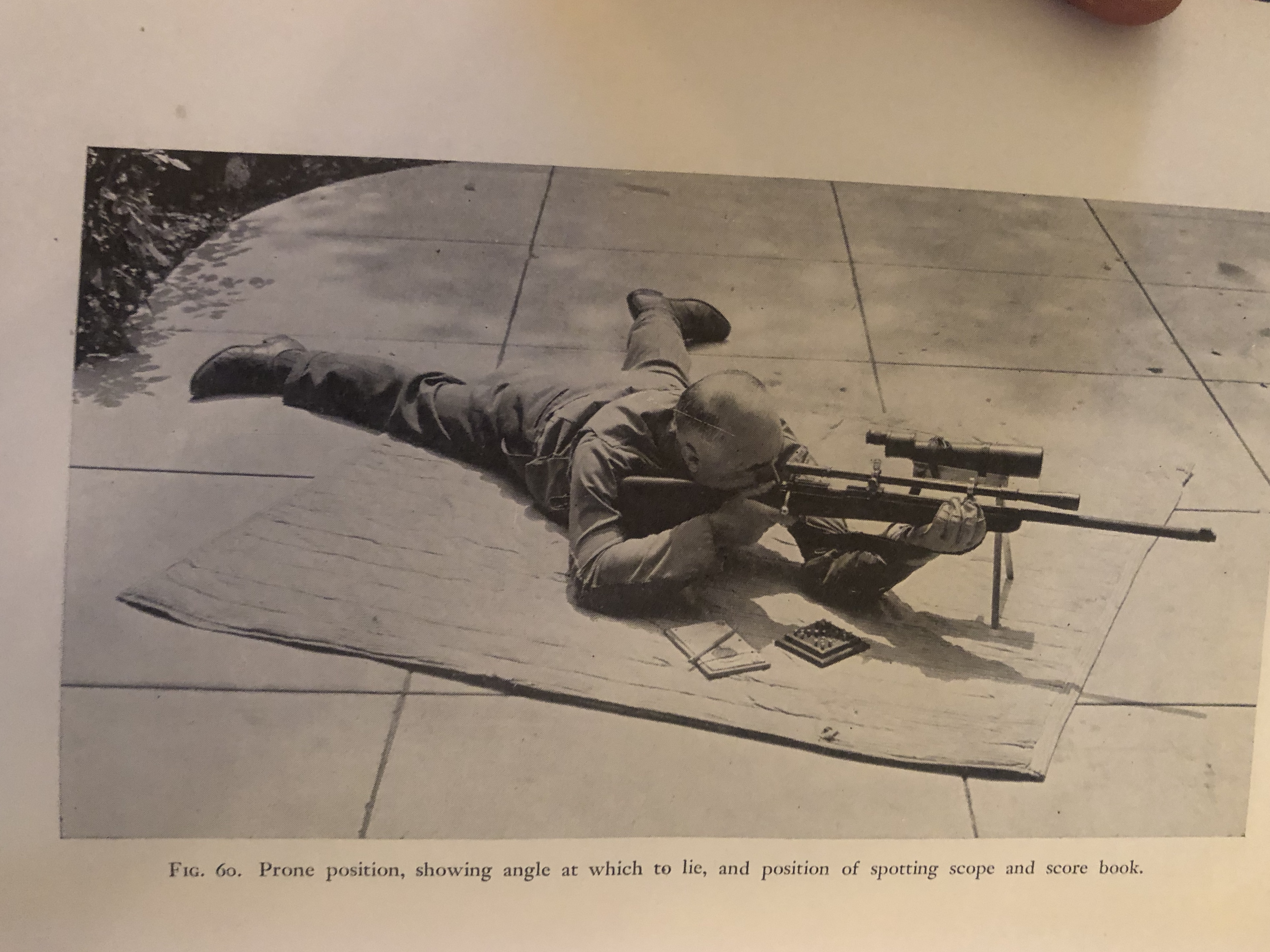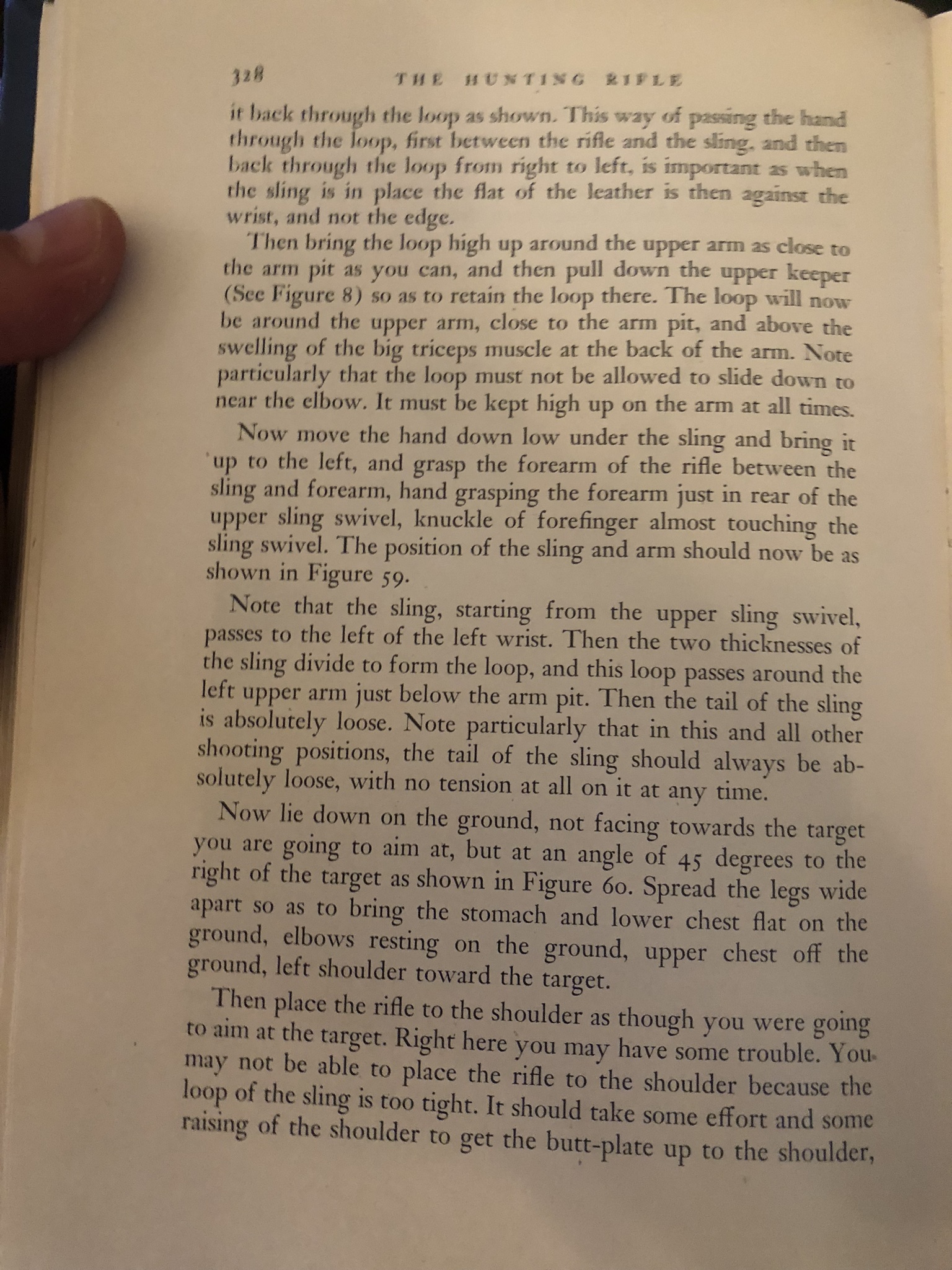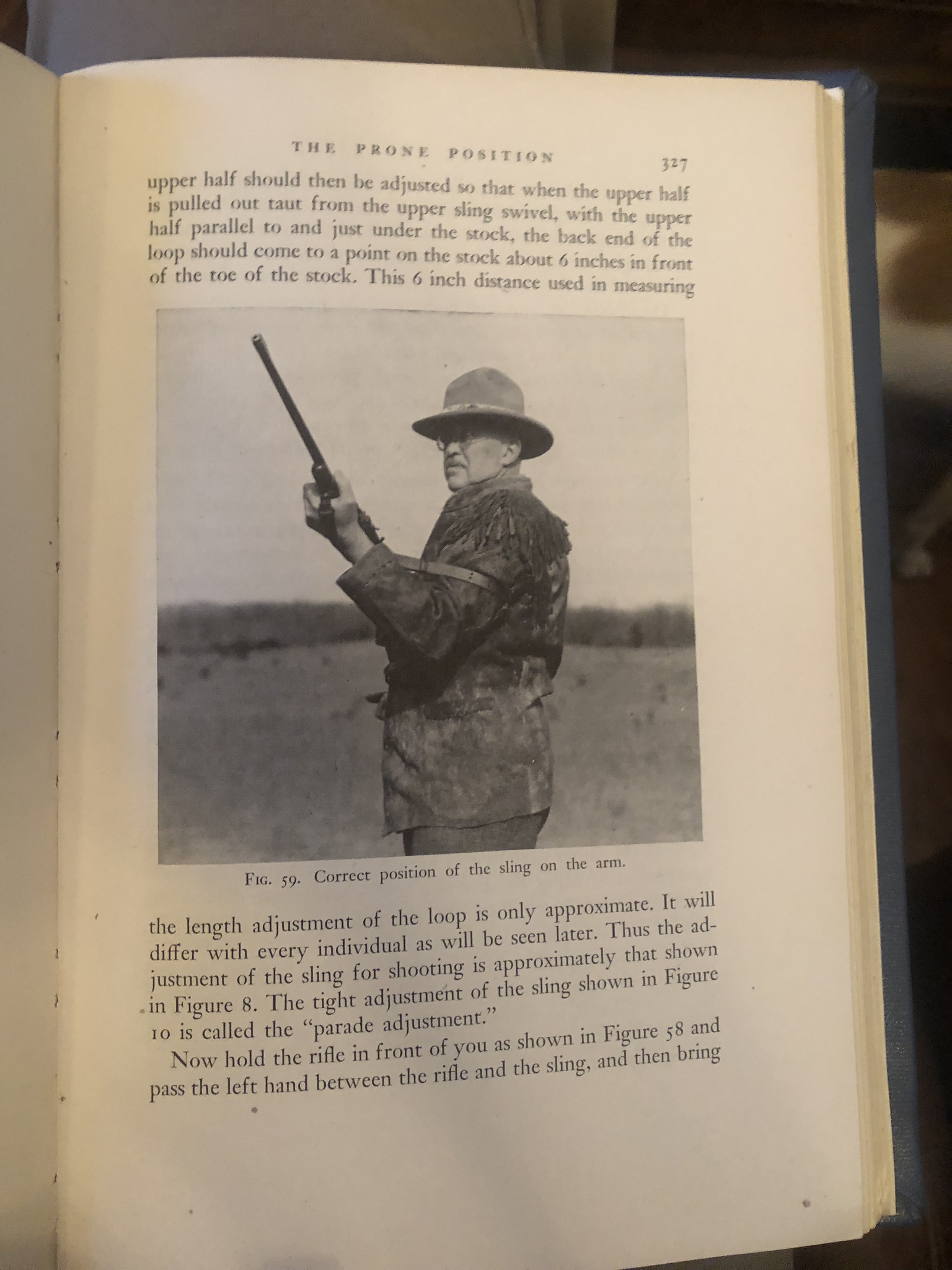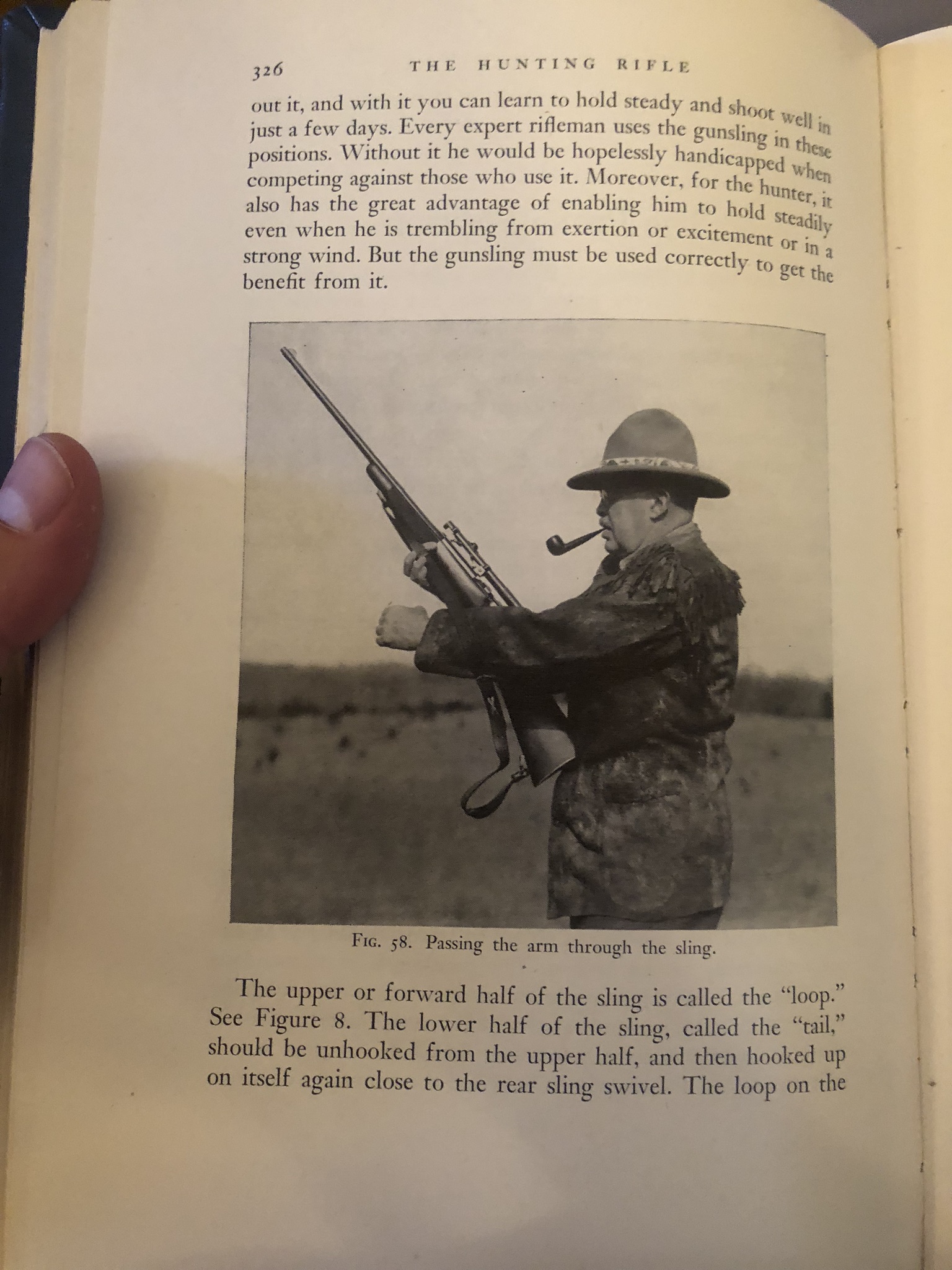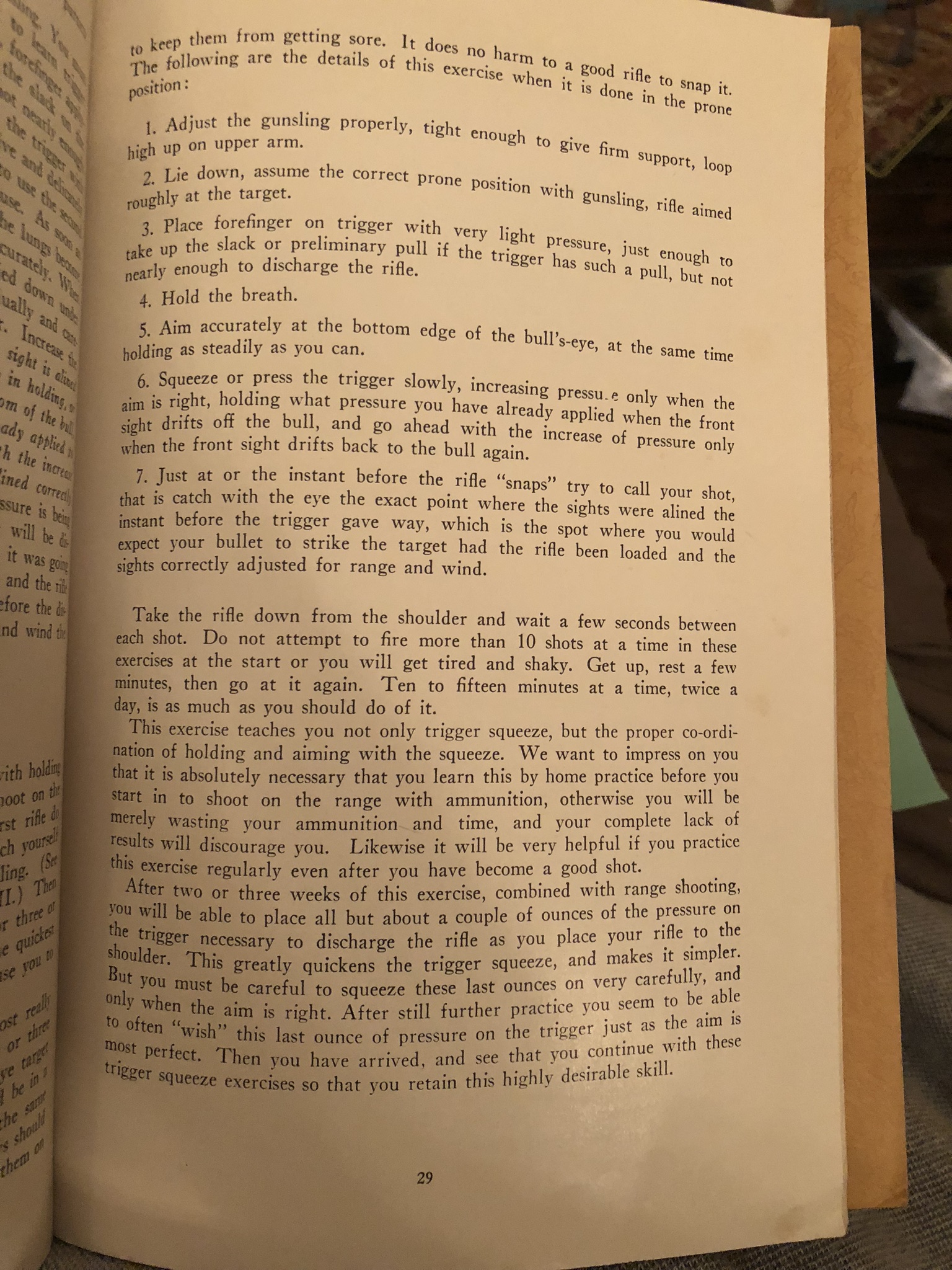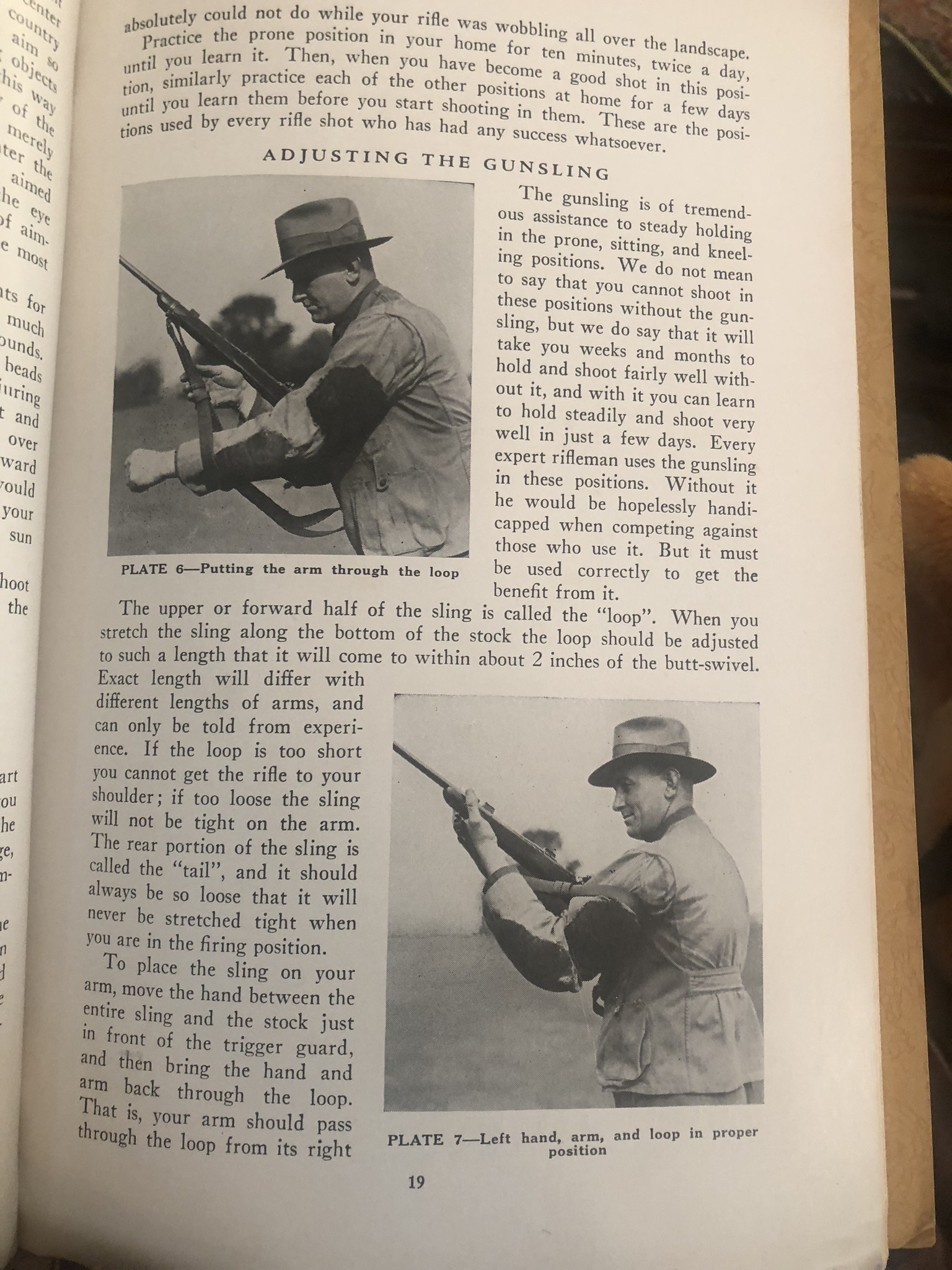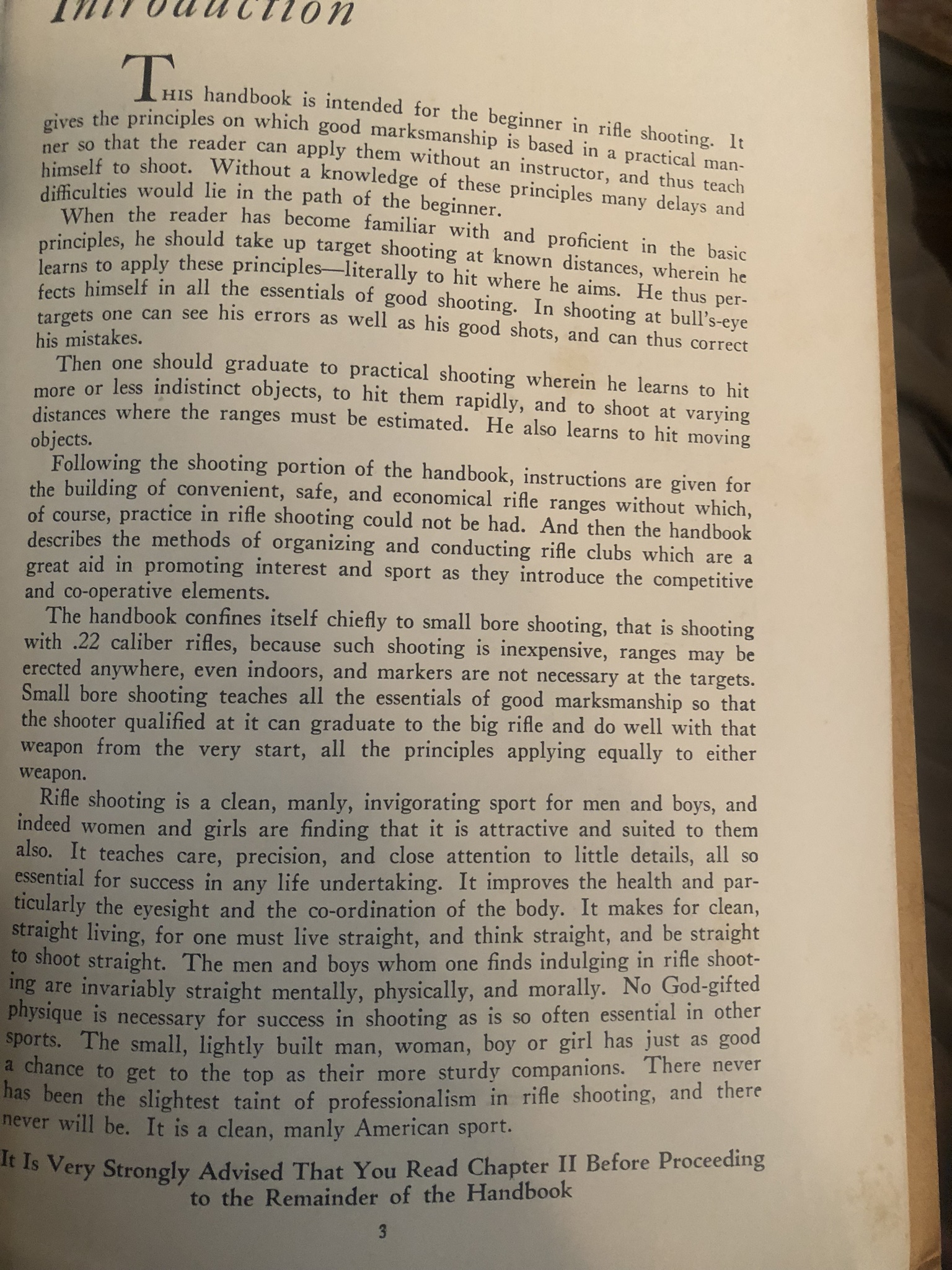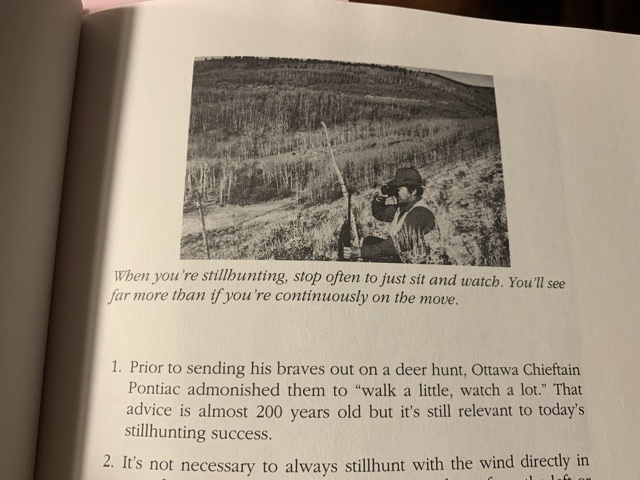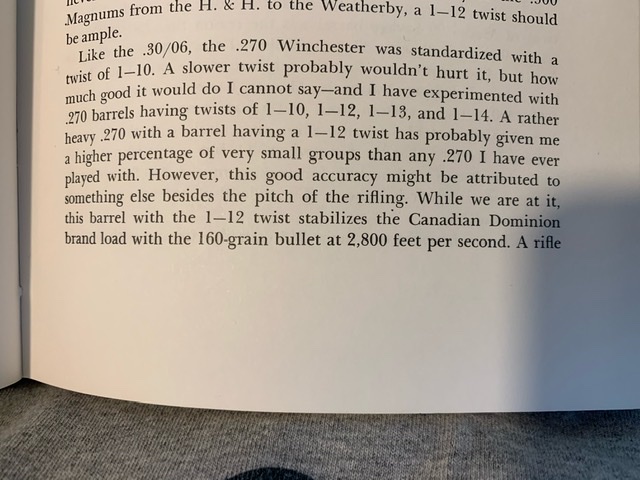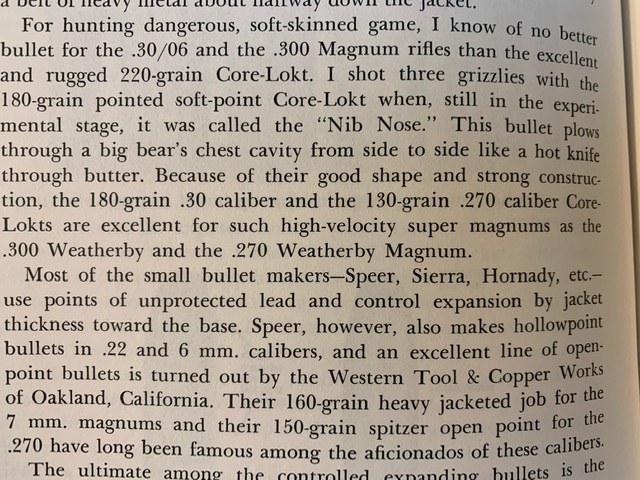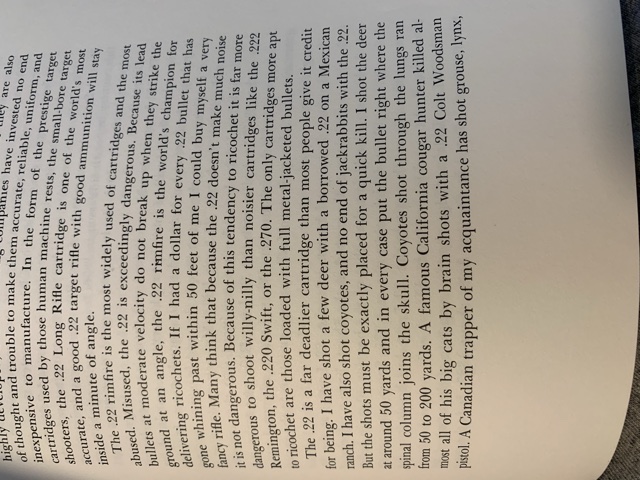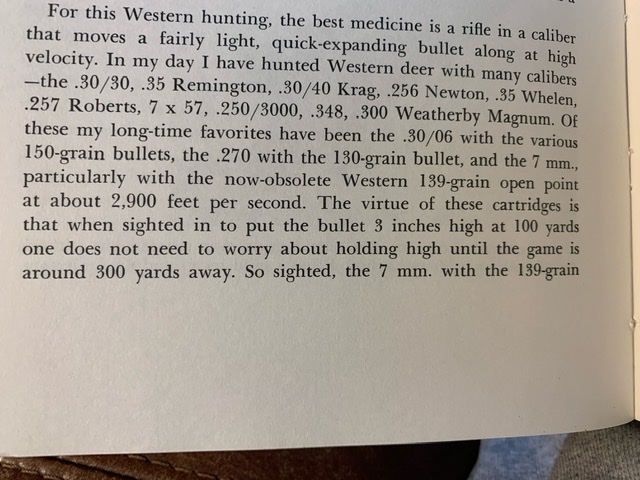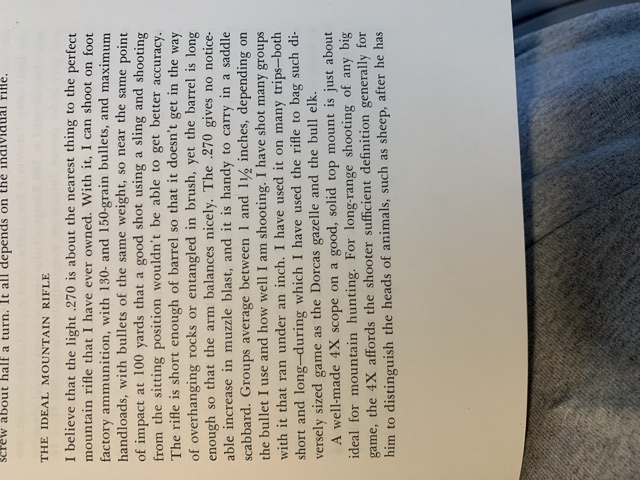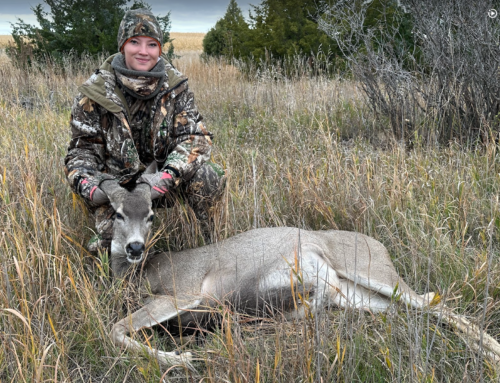With the Whalen sling there is enough leather to do what the sling is designed to do: be something light enough to assist in carrying the rifle and be stead enough to be used as a support for someone trained in it’s use while shooting. The hook goes through the butt swivel, the other end is laced to form a loop for use in the “hasty sling adjustment” for off-hand, sitting or prone positions.
On another forum, NavyChief wrote: I did some research and eventually went back to Jack O’Connor’s “The Hunting Rifle” (top 5 mandatory reading for all rifle cranks, in my humble opinion) and he flatly stated that the “Whelen sling is, for my money, neater, lighter, and more practical for a hunting rifle than any two-piece sling”, p. 255. I had no experience with a Whelen sling and my experience with the military slings left me wanting for something a little less cumbersome and with fewer parts that always seem to gouge and scratch up nice stocks. I had settled on a Claw sling for most rifles but it does little to help steady a rifle and I really like my leather Murray sling but it cost more than 100 bucks and is designated for a beautiful high dollar Model 70 and again, while a great carry strap, it does little to help get a rifle locked up tight for longer shots. Finally found a Whelen sling, did a little more research, and couldn’t be happier. It gets every rifle I have put it on locked up tight as a drum and I can hold steady at 300 yards across the field at a french drain cap from the sitting, standing or prone position. I have been practicing taking it from carry to shooting and I am locked up tight in less than 5 seconds. Where has this thing been my whole life!!!!!! Does anyone else have any experience with the Whelen? Best things about it, one brass clasp on the outside so no ripped up AAA stocks, one continuous strip of leather, easy to adjust, and cost less than 30$ for a 100% leather sling with brass hardware. O’connor had it right back then and probably has it right today. I rarely shoot over 300 yards from a climber so it works great for me. Why doesn’t this sling get more attention? Is there something I don’t know that will appear once I begin to use it in the field or is it just a good product that fell out of favor because it lost its shine to all the “New” materials and designs?
And, Jack O’Connor wrote in Desert Game in the Southwest:
It replaced this cowboy sling, which was far prettier and better leather, but less practical:
_____________________
It’s helpful to consider the target’s distance when selecting rifles for just about any task. Longer distances require stiffer stocks and larger cartridges. There’s also the expected effect at the selected distance. Is it just to knock some paint off a target or is there an animal that needs to be anchored in one shot? Here’s a handful of our top picks for several different distances.
Close distances mean rifles chambered in well-mannered cartridges. Chief among these cartridges is the .22 Long Rifle (LR) and our top pick for the .22 LR is Ruger’s 10/22. No other rimfire rifle has wider circulation or more aftermarket accessories. The 10/22 works just fine in any of its many configurations, with stocks coming in everything from traditional to folding to collapsible. They even have 10/22s that look similar to AR-15s. With no shortage of aftermarket triggers and magazines, it’s hard to find a rifle with more flexibility inside 100 yards than a Ruger 10/22.
300 YARDS
This distance gets into the centerfire cartridge realm and it’s hard to imagine a better contender for target use than the Tikka T3X chambered in .223 Remington. Tikka rifles are manufactured in Finland and are some of the best rifles made, especially when considering the price. These rifles have hammer-forged barrels for long life, are well-known for being incredibly accurate, and have models for both hunters (lighter barrels) and target shooters (heavier barrels and/or chassis). The aftermarket support is also exceptional for Tikka with many companies offering chassis, lightweight carbon fiber hunting stocks, and triggers. If the goal inside 300 yards involves hunting, the T3X is available is many chamberings from .223 Remington all the way up to .300 Winchester Magnum.
This distance requires some selectivity in both cartridge and rifle selection. Just about any centerfire rifle is able to sling bullets at this distance, but we’re working under the assumption that the shooter is only interested in reliable precision at this distance. The Tikkas will do a good job at 600 yards, but under some conditions, the injection-molded polymer stocks might yield erratic accuracy. At 600 yards and beyond, Seekins Precision is a great company to consider.
Seekins offers the Pro Hunter 2 (PH2), Element, and the HIT. The PH2 has a steel receiver and the Element has an aluminum receiver, that being the biggest distinction between the two. Seekins bolt-action rifles have two opposing lugs, but unlike actions patterned on the Remington 700, those lugs ride at the 12 and 6 o’clock when the bolt is open. This creates excellent feeding because so much of the bolt engages the cartridge in the magazine and the massive feed ramp scoops the cartridge into the chamber. The PH2 offers tons of performance and is Seekins’ lowest-priced rifle, while the Element sheds every possible ounce of weight.
1000 YARDS
This is where rifles get specialized in order to provide reliable performance at extended distances. The top picks here are the Sako TRG and the Accuracy International AXSR. Both of these rifles were designed as military sniper rifles, and it shows in the construction. Each rifle has more than the two standard action screws and uses much more torque on those screws to hold the receiver firmly in the chassis. This is one of the secrets to the accuracy found with each rifle. Each rifle also has magazines designed for the cartridges chambered, so it’s not the one-size-fits-all approach of the AICS-pattern seen so frequently. The Sako TRG is a simple and robust solution, while the Accuracy International is equally robust, but hosts a multi-caliber capability.

